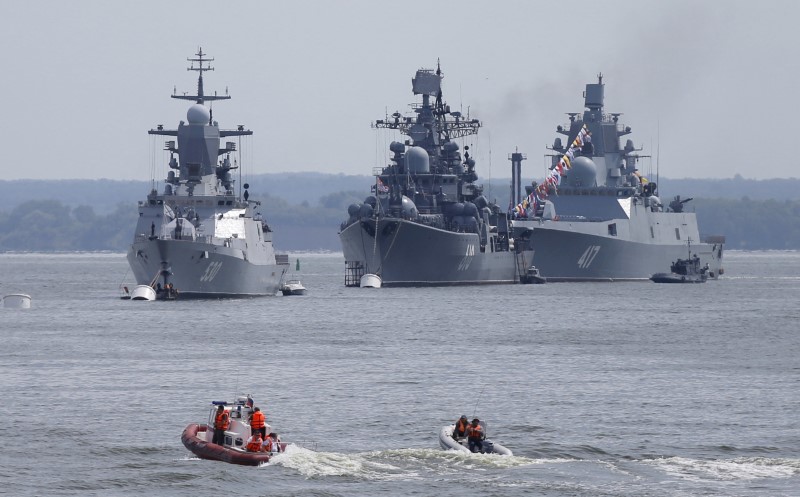Russia expands military transport fleet to move troops long distances
MOSCOW — Russia is urgently expanding its military support fleet to include more long-range ships to improve its ability to move troops and hardware to distant locations such as Syria, Defence Minister Sergei Shoigu said on Tuesday.
The construction push follows the Kremlin’s 2014 annexation of Ukraine’s Crimea, which used large military landing ships to bring in armored vehicles, and its 2015 intervention in Syria, and underscores Moscow’s expanded geopolitical ambitions.
For its Syria operation, Russia opened the “Syrian Express,” a shipping route from the Black Sea to the Syrian port of Tartus, which is serviced by military and civilian vessels and used to keep Russian forces supporting President Bashar al-Assad supplied with food, fuel, ammunition and weapons.

Reuters reported at the start of the operation, however, that Russia’s naval auxiliary fleet — its pool of military support vessels — was struggling to cope and that Moscow had been forced to buy up Turkish cargo ships to help meet the shortfall and to press an Arctic ice-breaker into action.
Shoigu, a close ally of President Vladimir Putin, told a defense ministry meeting in Moscow on Tuesday that Syria had “dramatically” underscored the need to be able to effectively move troops and hardware by sea on a large scale.
“We have new tasks,” said Shoigu. “Our main efforts must be directed into building large-tonnage ships and other universal and multi-functional ships capable of meeting the needs of the armed forces in distant maritime areas,” Shoigu told commanders.
Russia would build more than 60 such new ships before 2020, he added, saying that meant switching the focus from building tugs and short-range vessels to much larger long-range cargo-type ships.
The RIA news agency cited Deputy Defence Minister General Dmitry Bulgakov as saying in October that Russia hoped to turn out between six and 17 new auxiliary ships a year between 2016 and 2020.
Defense ministry officials say Russia’s naval auxiliary fleet, which is spread between its Northern, Baltic, Pacific and Black Sea fleets as well as its Caspian Flotilla, has just under 500 ships. Only around a fifth of those are modern with many of the rest dating back to the Soviet era, they say.
Shoigu said the Russian Navy would also get two advanced new frigates armed with cruise missiles and a new type of air defense missile system by the end of 2020.